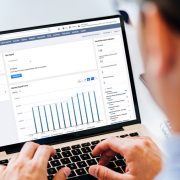Data provides the foundation for informed decision-making, from market trends and economic indicators to personal spending habits and investment performance. The key lies in transforming this data into actionable insights through analytics. Key Areas Where Data Analytics Improve Financial Decisions,
Personal finance management
Data analytics revolutionizes how individuals manage their finances. You can better manage your finances by analyzing spending patterns, income sources, and financial goals.
- Expense tracking and categorization
- Identifying areas for potential savings
- Optimizing debt repayment strategies
- Personalizing savings and investment plans
For instance, leveraging data from your bank statements and credit card transactions lets you visualise your spending habits over time. This helps you identify unnecessary expenses and adjust your budget accordingly.
Investment strategies
Data-driven investment strategies have become increasingly popular among both retail and institutional investors. Financial indicators, economic indicators, and historical market data help investors make better investment decisions.
- Portfolio optimization
- Market trend analysis
- Performance attribution
- Risk-adjusted return calculations
For example, you might use data analytics to back-test different investment strategies, helping you understand how they would have performed under various market conditions. It enables you to build a more resilient portfolio and informs your future investment decisions. vist rexas.com for info about rexas finance to explore advanced tools for data-driven investment strategies.

Budgeting and forecasting
Data-driven budgeting and forecasting significantly improve financial planning for both individuals and businesses. With historical data and current trends, you create more accurate projections and allocate resources more effectively.
- Cash flow forecasting
- Revenue prediction
- Expense trend analysis
- Budget variance analysis
For example, a business might use data analytics to forecast seasonal fluctuations in demand, allowing it to adjust inventory levels and staffing accordingly. This led to better cash flow management and improved profitability.
Credit decisions
If you’re applying for a loan or extending credit, data analytics can help inform your decision.
- Credit score analysis
- Behavioral scoring models
- Debt-to-income ratio calculations
- Payment history analysis
For individuals, understanding the factors that influence your credit score helps you take steps to improve it. For businesses, data-driven credit decisions help minimize lousy debt while maximizing sales to creditworthy customers.
Business financial planning
Data analytics inform businesses of various financial decisions, from pricing strategies to capital investment choices.
- Profitability analysis by product or customer segment
- Working capital optimization
- Investment return calculations
- Cost-benefit analysis for new projects
For instance, a retail business might use data analytics to optimize its pricing strategy, analyzing how price points affect sales volume and overall profitability across various product categories and customer segments.
Steps to implement data-driven financial decision making
- Identify your financial goals – Before diving into data analytics, it is crucial to define your financial objectives clearly. Whether you’re looking to increase savings, optimize investments, or improve business profitability, having clear goals will guide your data analysis efforts.
- Gather relevant data – Collect data from various sources relevant to your financial goals. This might include bank statements, investment records, market data, or business financial reports.
- Choose the right analytics tools – Select appropriate tools for analyzing your financial data. These could range from simple spreadsheet applications to more sophisticated financial modeling software. For more advanced analytics capabilities, consider exploring specialized platforms.
- Analyze the data – Use your chosen tools to analyze the data and generate insights. This might involve creating visualizations, running statistical analyses, or applying machine learning algorithms.
- Interpret the results – Carefully interpret the results of your analysis, considering both the insights revealed and any limitations of the data or analysis methods used. Be aware of potential biases and always apply critical thinking to your interpretations.
It is important to remember that analytics and data are tools to help with decision-making. The most effective approach combines data-driven insights with experience, intuition, and deep financial knowledge.











Comments